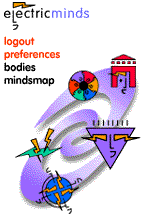
|

|

Two social scientists at Stanford University have performed extensive research that led them to a startling conclusion: Popular wisdom to the contrary, people treat human representations on television and computer screens in exactly the same way they treat other people. The implications of this research have very practical consequences in what they tell us about how to design computers, and how to anticipate the social consequences of communication media. At the same time, the philosophical and moral implications are profound: at a visceral level, humans literally do not know the difference between real people and simulations, yet we live in a world in which more and more of our social interactions are mediated by computer programs or video images. The social scientists who came to these unsettling conclusions are Professor Byron Reeves and Associate Professor Clifford Nass of Stanford University's "Social Responses to Communications Project." The researchers started by questioning the common wisdom, which holds that people understand very well that an image on a television screen or a voice coming from a computer are artificial simulations, soul-less artifacts that are no more human than a door or a spoon. This conclusion makes sense to most people, but so does the premise that the Earth is flat. The key is to test the premise through experimentation. Reeves and Nass are fortunate in that social psychology has built a rich body of research around questions about the way people react to other people and treat other people. They simply duplicated this fundamental research, but instead of performing experiments between people, they performed experiments between people and artificial representations of people. The results defy the common wisdom. For example, what if two groups of people took the same test that was mediated by a computer, and one group was treated politely by the computer, while the other was not? It turns out that people end up with warmer feelings about the "polite" computer, even if they explicitly state that they know it is just a machine. People also treat computers that use female voices differently from computers that use male voices. Large faces on a screen evoke reactions in people that are identical to the reactions evoked by physical invasions of their personal space. People moving on screens affect people's brainwaves the same way the same kind of motions affect their brainwaves when they are carried out by real people. Reeves and Nass have written a book about their findings, "The Media Equation: How People Treat Computers, Television, and New Media Like Real People and Places" (1996, Cambridge University Press). The "Media Equation" in the title is a simple, if frightening one: in terms of basic reactions, as measured by objective tests, media representations equal real people. We might say we know the difference between people and computers and television characters, but in laboratory tests, we act as if they were the same. The authors conclude that there is a disparity between our biological evolution and our technological environment. Humans evolved over a long time to pay close attention to other people, to the way people treat us, to the way people walk and talk, to people's facial expressions and tone of voice. We make social decisions and life and death decisions based on this human-centered response system that has evolved. Lifelike artificial representations of people have only come along in the past 100 years. Our artifacts might be in the information age, but our biology is still in the caveman era. People who design computer programs and communication systems need to pay attention to these findings, as do the people who design educational and entertainment media. And everybody else who teaches, raises children, does business in a world where so much of our social interaction takes place with artifacts, from voicemail to computerized instruction, ought to pay attention to these findings. Fortunately, the authors have written their book in a clear style, easily understood by non-specialists. Find out More by Visiting:
http://www-leland.stanford.edu/group/srct
|
librarybob said: I think it would be useful to distinguish between "innate ability" and "the result after many years of acculturation and schooling" to define "dumb". I wouldn't think it likely that there has been an innate (genetic) change, so that if people have indeed been dumbed down, it must be due to environmental causes. Actually, maybe "dumbed down" isn't quite right--maybe very committed to "low" and "mid" culture that really doesn't demand much thinking. A problem I see is that both of these are "ahistoric," living in the here and now with little sense of a past and little sense of a future. They lack a larger context. Most Active Topics: Topic 45 The Future of Families Topic 42 Library of Tomorrow: 20 Questions (game) | |||
|
| ||||
Also in Howard Rheingold's Tomorrow: Collaborative Filtering excerpts from "What Will Be" Digital Maps: | ||||
|
|
|
electric minds |
virtual community center |
world wide jam |
edge tech |
tomorrow |
conversations
Any questions? We have answers.
©1996, 1997 electric minds, all rights reserved worldwide.
|
